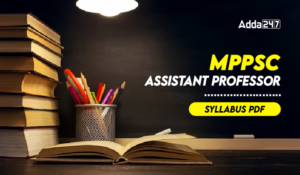Unlock success in CTET and other TET exams with our comprehensive Science study notes. Designed to cover key concepts, these notes provide a solid foundation for acing your exams. Master science topics effortlessly and confidently with our exam-focused materials. Your path to teaching excellence begins here.
TEACHING AIDS IN SCIENCE
1. Teaching Aids:
The science teacher also desires to teach his subject as effectively as possible for realizing the stipulated objectives of teaching science. In doing so, he wants an effective communication with his students in the most interesting and useful way. The effectiveness of this communication demands that what the teacher wants to convey should be conveyed by him in the more desirable and effective way and, on the other end, the children receiving the fruit of this communication must be benefited by it to the maximum extent.
A. Functions of Teaching Aids:
• It provides inspiration and curiosity among the students about the subject.
• It provides the opportunity to the students to take part indifferent activities.
• It makes the subject interesting, simple and entertaining.
• It makes difficult part of chapter easier to understand.
• It develops interest of students in the subject.
• It makes lessons influential and teaching-learning impressive.
B. Classification of Teaching Aids:
Teaching aids may be classified as-audio aids, visual aids, audio-visual aids and activity aids.
1. Audio Aids: Those are like radio, tape recorder, etc.; represent that aid material which helps the learner to acquire the knowledge through his auditory senses.
2. Visual Aids: Those are like charts, pictures, models, epidiascope, micro-projector, filmstrips, etc.; represent that aid material which helps the learner in acquiring the learning experiences through his visual senses.
3. Audio-Visual Aids: Those are like television, motion pictures, video-films, living objects, etc., represent all those equipment and aid material in which the learner gets opportunity to utilize both his auditory and visual senses for gaining the desired learning experiences.
4. Activity Aids: Activity aids are those aids in which the students learn by engaging in some useful activities. These aids facilitate learning through sight and sound as well as through doing.
• The examples of such aid in the teaching of science are as follows –
(i) Science excursions and visits.
(ii) Science exhibitions and fairs.
(iii) Science Museum.
(iv) Nature study corner
(v) Experimentation in the laboratory and workshop.
• There is another way of classifying the teaching aids and equipment which is quite technical and technological. According to this approach, these can be classified as-hardware and software.
• The equipment and machines like epidiascope, different types of projectors, radio, television, tape recorder, video, teaching machines and computers, etc, are named as hardware.
• On the other hand, in the category of software, we include the aid materials like pictures and other printed material, graphics like charts, maps, diagrams, three dimensional objects like models, specimens and actual objects, and other specially prepared material like slides, film strips, audio and visual tapes.
• The material included in this category makes an essential part of the equipment and machines mentioned as hardware. The hardware can serve as a teaching aid only when it is fed or supplied with some or other types of software.
• Therefore, hardware is quite dependent upon software for their services. On the other hand, many of the software may serve well without the help of hardware. The graphics, three dimensional objects, pictures and printed material, etc, can function quite independently as a useful aid for the teaching of science.
C. Preparation of Teaching Aids:
The different types of teaching aid material mentioned above can be procured from the variety of sources. It can be borrowed from the audio-visual libraries, institutes or departments.
• Being priced commodity, it can be purchased from the commercial establishments.
• However, educationally as well as economically it is always better to get them prepared in the schools itself. Consequently, the teacher has to share the big responsibility of guiding his students in the preparation of such material
• For this purpose, he must try to acquire the necessary knowledge and skills for its proper preparation. Consequently, let us try to discuss some essentials regarding the preparation of the important types of teaching aid material generally used in the teaching of science.
D. Selection of Teaching Aids:
• A teacher must know to make use of an appropriate teaching aid most suitable for the teaching at a particular teaching-learning situation.
• As a matter or guidance, a teacher of science must take care of the following principles while making a judicious selection of the proper teaching aids for teaching a particular topic in his subject.
(i) Relevancy: The aid used should be quite relevant to the topic in hand.
(ii) Suitability: It should suit the topic as best as possible by making its study quite comprehensive, interesting, permanent and effective.
(iii) Educative: The aid should have specific educational value besides being interesting and motivating. In no case, it should be confined to mere entertainment.
(iv) Best Substitute for the First Hand Experience: The aid should be so chosen as to prove a best possible substitute in terms of reality, accuracy and truthful representation of object or the first hand experiences.
(v) Learner Centered: The aid material selected should be such that it suits the age level, grade level, basic instincts, urges, interest and other unique characteristics of the students of the class.
(vi) Simplicity: The aid used should be quite simple in its construction and use. It must also be able to convey its sense as simply as possible.
(vii) Environment Centered: The aid material should suit the requirement of the physical, social and cultural environment of the students.
(viii) Practicability: The aid material should be selected in view of the prevailing circumstances, available resources and purposes to be served. It should not be too costly in its purchase and collection or in terms of its use and demonstration in the class. It should meet the available circumstances in terms of weather conditions, climatic requirements handling by the teacher and students and other resources ready available in the institution and classroom.
(ix) Objectives Attainment: The aid material should be so selected as to help in the proper realization of the stipulated learning or instructional objectives of the topic in hand.



 Daman and Diu Primary Teacher Recruitmen...
Daman and Diu Primary Teacher Recruitmen...
 UGC NET Previous Year Question Papers wi...
UGC NET Previous Year Question Papers wi...
 MPPSC Assistant Professor Syllabus 2026,...
MPPSC Assistant Professor Syllabus 2026,...












